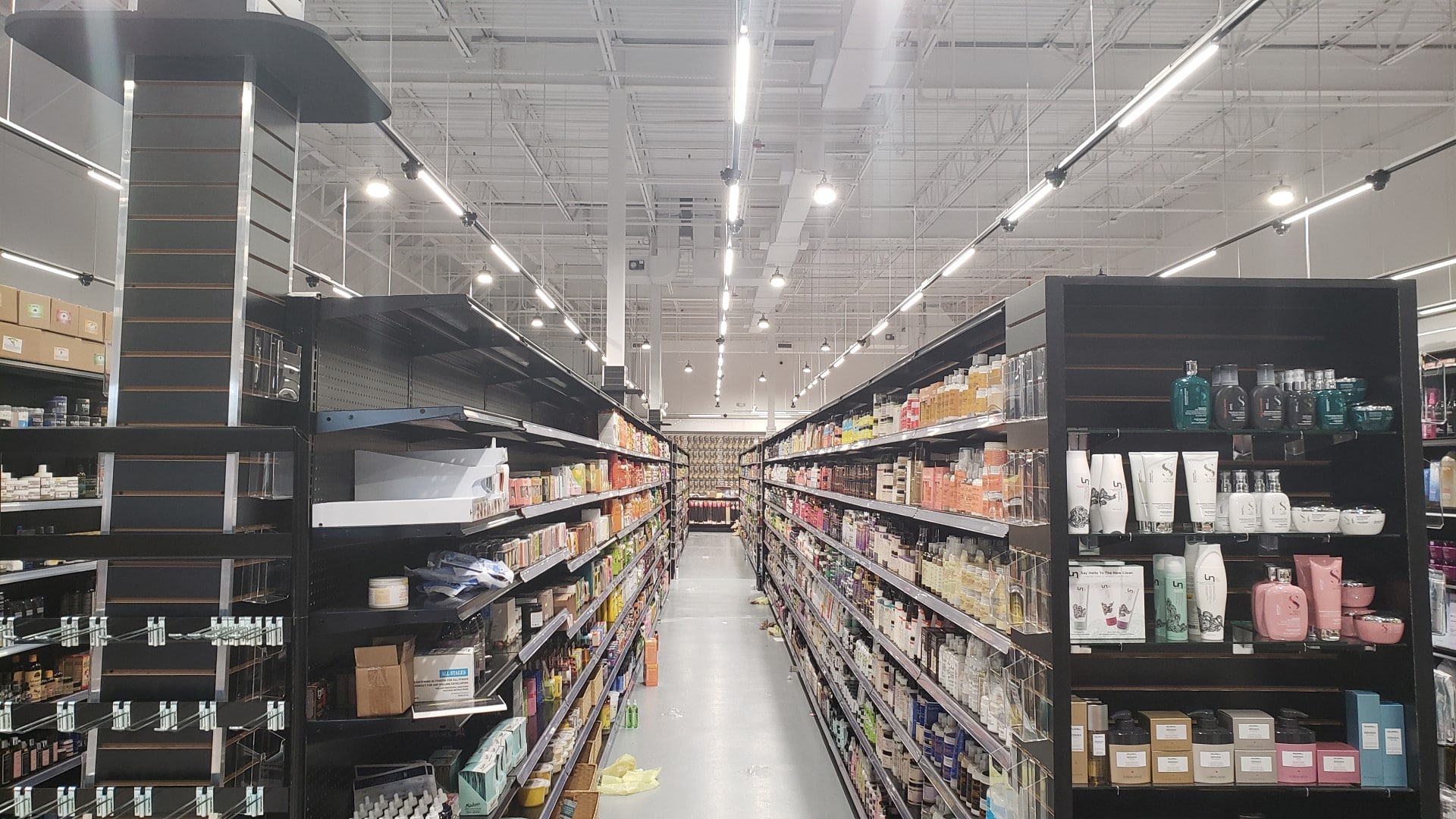Effective lighting plays a vital role in supermarkets, enhancing product visibility, creating a welcoming ambiance, and improving the overall shopping experience. Let’s explore some important considerations when choosing LED supermarket lighting for the diverse needs of grocery and mixed-use shopping spaces.
Assessing Your Supermarket LED Lighting Needs
Before selecting LED supermarket lighting, it’s essential to first assess your store’s specific lighting requirements. This involves analyzing the store layout, identifying areas that require additional lighting, and determining the lighting needs based on product displays and shelving.
You also want your products, especially meat and produce, to be as color-accurate as possible. Therefore, considering the importance of color rendering and brightness levels is crucial for showcasing products accurately and ensuring they are visually appealing. By understanding your store’s unique lighting requirements, you can make an informed decision and create an inviting shopping environment.
Key Factors to Consider When Choosing LED Supermarket Lighting
LED is the standard for supermarket lights because energy and cost efficiency are paramount. Longevity and maintenance requirements are also important considerations, as LED lights have a long lifespan and require only infrequent replacement.
Selecting LED lights with the right color temperature and ambiance can enhance the visual appeal of your store. Adjustable lighting options for different sections allow for adaptive lighting control, while compatibility with dimmers and control systems provides further customization possibilities. Adding a layer of flexibility to your lighting design can keep your space dynamic and save you from headaches down the line.

Selecting the Right LED Fixtures
The selection of appropriate LED fixtures is vital to meet the specific lighting needs of your supermarket. Linear fixtures, such as recessed troffers and pendant lights, are ideal for providing even illumination over wide areas such as aisles and checkout counters, while accent lights and track lighting can be used to highlight specific products or displays. By choosing the right LED fixtures for each area, you can create a well-lit and visually appealing shopping environment.
Assessing the wattage and lumen output requirements ensures optimal lighting levels throughout the store. Considering the right beam angle is crucial to provide adequate coverage and minimize shadows. Additionally, the aesthetics and design of the fixtures should align with the store’s overall visual identity.
Evaluating Lighting Controls and Automation
Lighting controls play a significant role in supermarkets, offering energy-saving opportunities and enhancing operational efficiency. Different types of lighting controls, such as occupancy sensors and daylight harvesting, can be integrated into your LED lighting system. These controls allow for automatic adjustments based on occupancy and natural light availability.
Integrating smart lighting systems and automation enables centralized control and scheduling, further optimizing energy usage and convenience. Smart lighting systems can also provide valuable data and insights on energy consumption patterns, allowing you to identify areas for further optimization and cost-saving opportunities. With the ability to remotely monitor and manage your lighting system, you can easily make adjustments, track energy usage, and identify any maintenance needs. This type of detailed oversight will help you improve overall efficiency.
Considering Environmental Impact
LED lighting offers substantial environmental benefits, including energy efficiency, reduced carbon footprint, and lower greenhouse gas emissions. When choosing LED supermarket lighting, look for energy-efficient certifications and standards, such as ENERGY STAR, to ensure adherence to industry benchmarks. It’s also important to consider the proper disposal and recycling options for LED fixtures to minimize waste and promote sustainability.
Budgeting and Return on Investment (ROI)
While the initial investment in LED lighting may be higher than traditional lighting options, the long-term cost savings and return on investment make it a worthwhile choice. By calculating the potential energy savings and payback period, you can gauge the financial benefits of LED lighting for your supermarket and make an informed decision.
Additionally, explore available rebates and incentives offered by local governments and utility companies, as these can significantly reduce the upfront costs and enhance the overall financial viability of your LED lighting project.
Supermarket LED Lighting by Solais
Choosing the right LED supermarket lighting is a crucial decision that can significantly impact the shopping experience, energy efficiency, and overall success of your store. It’s recommended to consult lighting professionals, such as our pros here at Solais, who can provide personalized guidance and expertise in product selection and implementation.
Make an informed decision, considering the specific needs of your supermarket, and take advantage of the versatility and benefits offered by LED lighting to create a vibrant and efficient shopping environment. Contact Solais for further assistance and explore our comprehensive range of LED lighting solutions tailored to the grocery and retail industry.
